Disclosure: This article contains affiliate links. We may earn a commission from purchases at no extra cost to you, which helps our travel content.
After decades of business travel, I've developed what my colleagues call an 'occupational hazard' - seeing the world through frames and compositions rather than just tourist attractions. New York City, where I've attended the Greater New York Dental Meeting annually for nearly two decades, has become my photographic playground beyond conference hours. While tourists cluster at Times Square with their smartphones pointed skyward, I've spent countless dawn hours and twilight moments discovering the city's more nuanced photographic treasures. This autumn marks my fifteenth visit to Manhattan, and I'm finally sharing my curated collection of photography locations that showcase the authentic character of New York without a single costumed character or Broadway marquee in sight. Whether you're visiting for business like me or purely pleasure, these spots will elevate your photography portfolio and social media presence with images that capture the true essence of the city that never sleeps.
The Elevated Perspectives: Heights Beyond the Empire State
While tourists queue for hours at the Empire State Building, savvy photographers know that New York offers numerous elevated vantage points with equally stunning - and often less obstructed - views.
My personal favorite remains the Top of the Rock at Rockefeller Center, particularly at sunset when the Empire State Building itself becomes your subject, bathed in golden hour light against the southern Manhattan skyline. Arrive 45 minutes before sunset to secure your spot and witness the city's transformation as artificial lights begin their evening performance.
For a more contemporary architectural frame, the Edge at Hudson Yards offers a unique triangular observation deck extending 80 feet from the building's face. Its glass floor panels create vertigo-inducing compositions directly above the streets below - a perspective that transforms ordinary city patterns into abstract art. I've found my travel tripod absolutely essential here, particularly for blue hour shots when longer exposures capture the light trails of vehicles below.
Perhaps my most cherished discovery is the Roosevelt Island Tramway. For merely the price of a MetroCard swipe, you'll glide above the East River in a suspended cable car, capturing unparalleled views of the Queensboro Bridge and Midtown skyline through the windows. Time your journey for dusk when the city begins to sparkle, but prepare for challenging shooting conditions through glass - setting your camera to manual focus often yields better results than fighting with autofocus in this scenario.
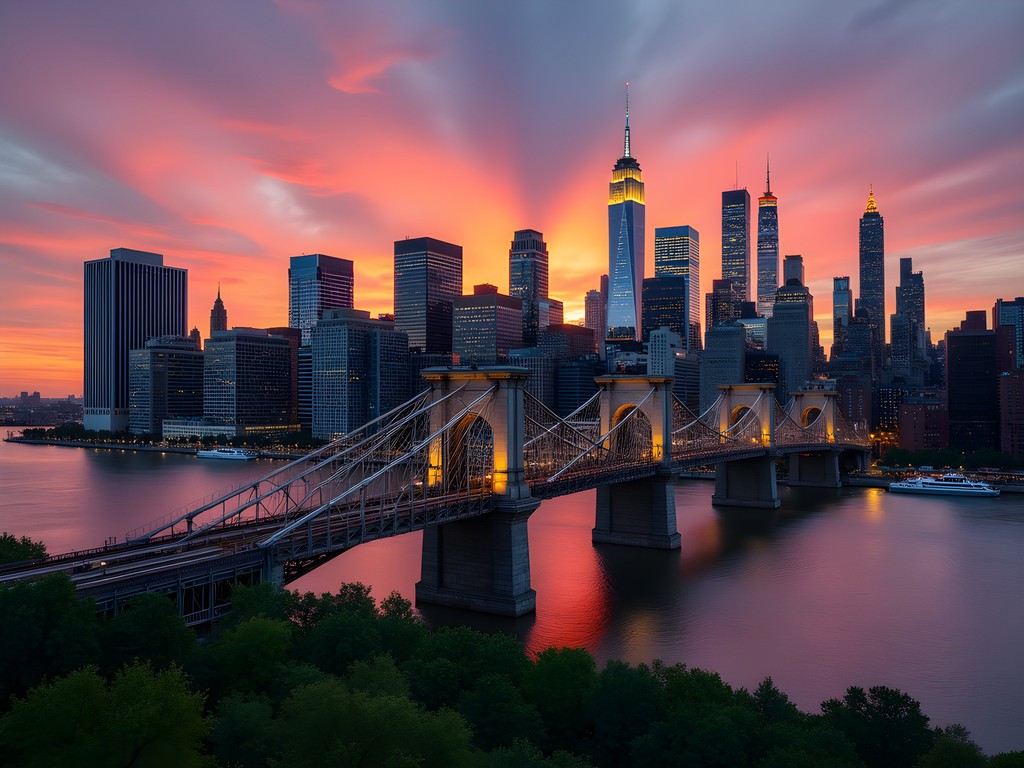
💡 Pro Tips
- Purchase observation deck tickets online to avoid queues and secure specific time slots
- Bring a microfiber cloth to clean glass surfaces before shooting through windows
- Use a polarizing filter to reduce reflections when shooting through glass
Waterfront Wonders: Maritime Perspectives of the Concrete Jungle
My fascination with maritime transport naturally draws me to New York's waterways, where the juxtaposition of historic vessels against modern skyscrapers creates compelling visual narratives.
The Brooklyn Bridge Park waterfront offers what I consider the quintessential Manhattan skyline view. For an extraordinary composition, position yourself at Pebble Beach near Pier 1 during blue hour, when office lights create a tapestry of illumination across the Financial District. The foreground of smooth river stones provides perfect leading lines toward the iconic bridge. I've spent countless evenings here with my wide-angle lens, which captures the expansive scene beautifully.
For those seeking industrial maritime aesthetics, the Red Hook neighborhood delivers with its working waterfront and vintage warehouses. The area around Valentino Pier offers unobstructed views of the Statue of Liberty across the harbor, particularly striking at sunset when Lady Liberty is silhouetted against orange skies. This location rewards photographers who embrace negative space in their compositions.
My professional trips have taught me the value of ferry transportation not just for commuting but for photography. The Staten Island Ferry provides a free 25-minute journey with spectacular views of Lower Manhattan and the Statue of Liberty. Unlike tourist cruises, this commuter service allows you to experience authentic New York maritime life. Position yourself at the stern when departing Manhattan and at the bow for your return journey. In autumn, the early evening departures around 5:30 pm often coincide with magnificent light conditions as the sun sets behind New Jersey.
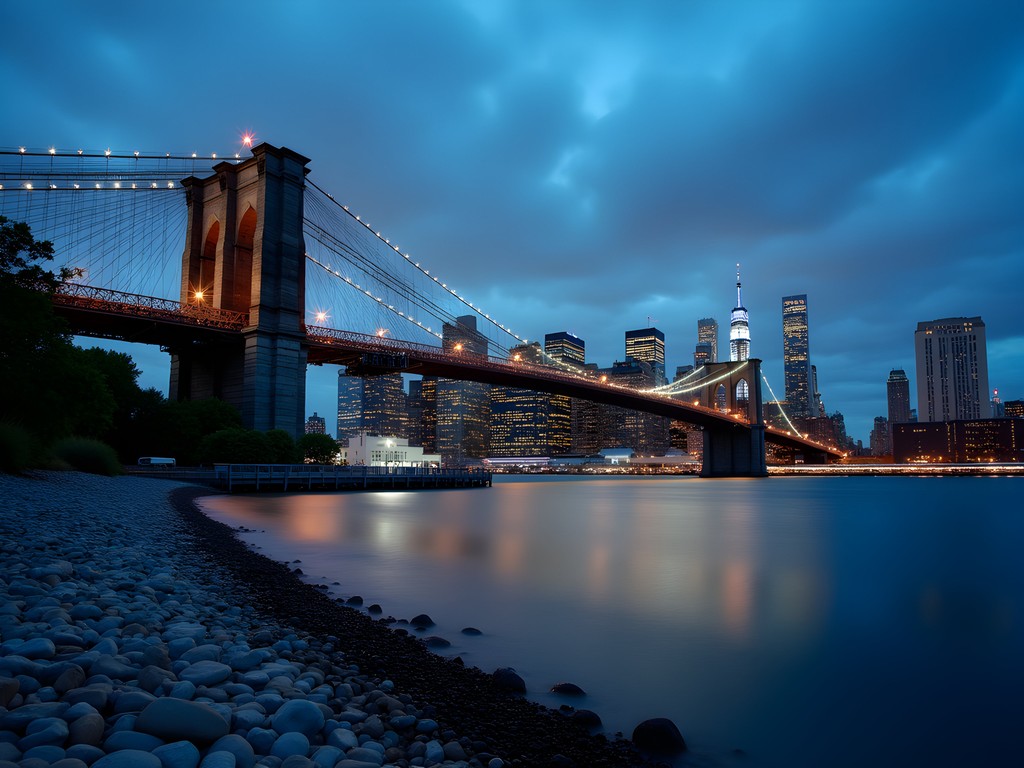
💡 Pro Tips
- Use a neutral density filter to create silky water effects in daytime long exposures
- Shoot during rush hour when ferries create interesting wake patterns in the water
- Pack a zip-lock bag to protect your camera in case of unexpected spray from the water
Architectural Time Capsules: Historic Districts & Hidden Courtyards
New York's architectural heritage offers rich photographic opportunities beyond the obvious skyscrapers, particularly in neighborhoods where multiple eras of design coexist in fascinating harmony.
DUMBO (Down Under the Manhattan Bridge Overpass) has become increasingly popular with photographers, but with good reason. The cobblestone streets and industrial buildings create a distinctive atmosphere that feels quintessentially New York. The famous view from Washington Street frames the Manhattan Bridge perfectly between brick buildings, with the Empire State Building visible through the bridge's archway. Visit on weekday mornings before 8am to avoid crowds and capture the scene in peaceful solitude.
The Jefferson Market Library in Greenwich Village presents a fairytale-like Victorian Gothic structure that seems transported from another continent. Its clock tower and ornate details provide endless compositional possibilities, particularly when photographed from the small garden on the Greenwich Avenue side. The contrast between this 1877 structure and surrounding buildings creates a compelling visual narrative about the city's layered history.
Perhaps my most treasured discovery came during an unexpected detour between dental lectures: Pomander Walk on the Upper West Side. This hidden Tudor-style enclave tucked between Broadway and West End Avenue feels like stumbling into a secret English village. While the gated community limits interior access, photographs through the ironwork entrance gates yield charming results, particularly when residents have decorated for autumn with pumpkins and seasonal wreaths. The telephoto zoom lens I carry for architectural details proves invaluable here, allowing me to capture intimate vignettes without intruding on residents' privacy.
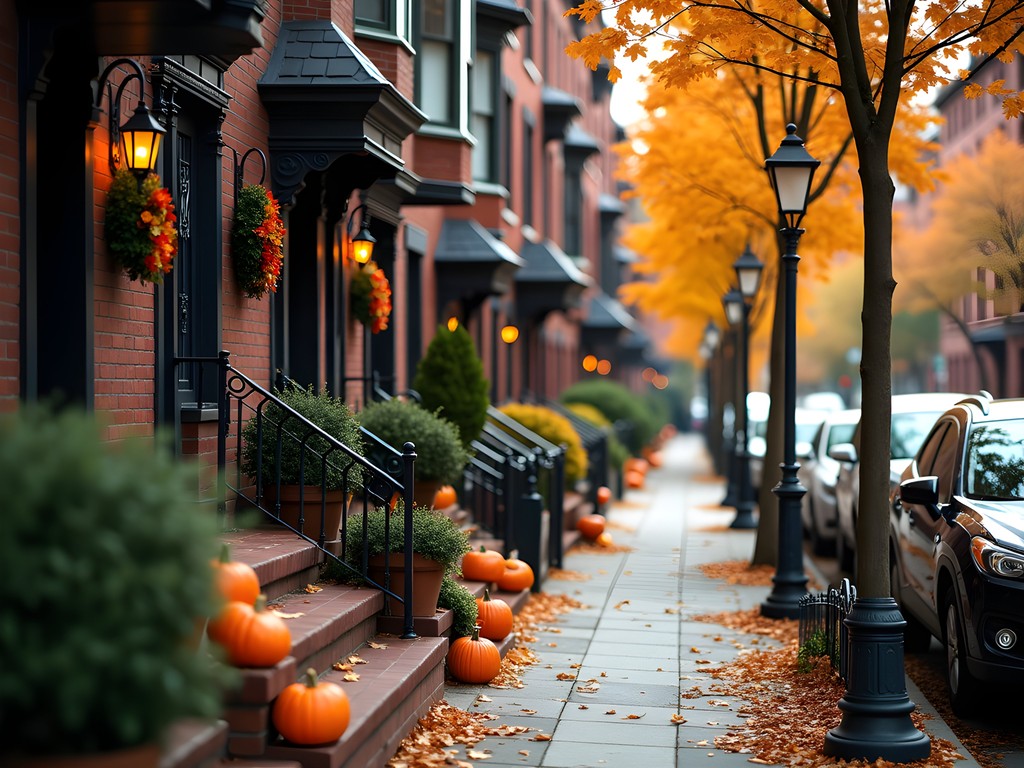
💡 Pro Tips
- Photograph historic buildings in early morning when modern elements like cars and pedestrians are minimal
- Look for reflections of historic structures in the glass facades of modern buildings for compelling juxtapositions
- Research the architectural history before visiting to understand significant details worth highlighting
Urban Oases: Parks Beyond Central Park
While Central Park rightfully claims fame as Manhattan's green heart, the city boasts numerous lesser-known parks that offer distinctive photographic opportunities without the crowds.
The High Line transformed an abandoned elevated railway into a linear park that provides unique perspectives of Chelsea and the Meatpacking District. As a dentist who appreciates precision, I'm drawn to the thoughtful integration of wild-inspired plantings with industrial remnants. The section between 15th and 17th Streets offers particularly compelling compositions where the planted trackbed creates natural leading lines toward architectural landmarks. In autumn, the ornamental grasses catch morning light spectacularly, especially when backlit around 9am.
Greenacre Park on East 51st Street represents the opposite end of the spectrum - a pocket park measuring just 60 by 120 feet that nonetheless contains a magnificent 25-foot waterfall. This hidden gem provides a lesson in photographing intimate spaces: the sound of cascading water drowns the city noise while the negative ions create an atmosphere of tranquility. The interplay of water, stone, and dappled light rewards photographers who take time to observe subtle details rather than seeking grand vistas.
Fort Tryon Park in northern Manhattan houses The Cloisters museum but deserves photographic attention in its own right. Its elevated position offers sweeping views of the Hudson River and Palisades that few tourists ever witness. The Heather Garden contains magnificent plantings that peak in autumn with rich burgundy and gold tones. I've found dawn visits here particularly rewarding - the early light illuminating the mist rising from the river creates atmospheric conditions perfect for my night-to-day transition photography. My camera rain cover has proven essential during dewy autumn mornings when equipment protection becomes necessary while capturing these ephemeral conditions.
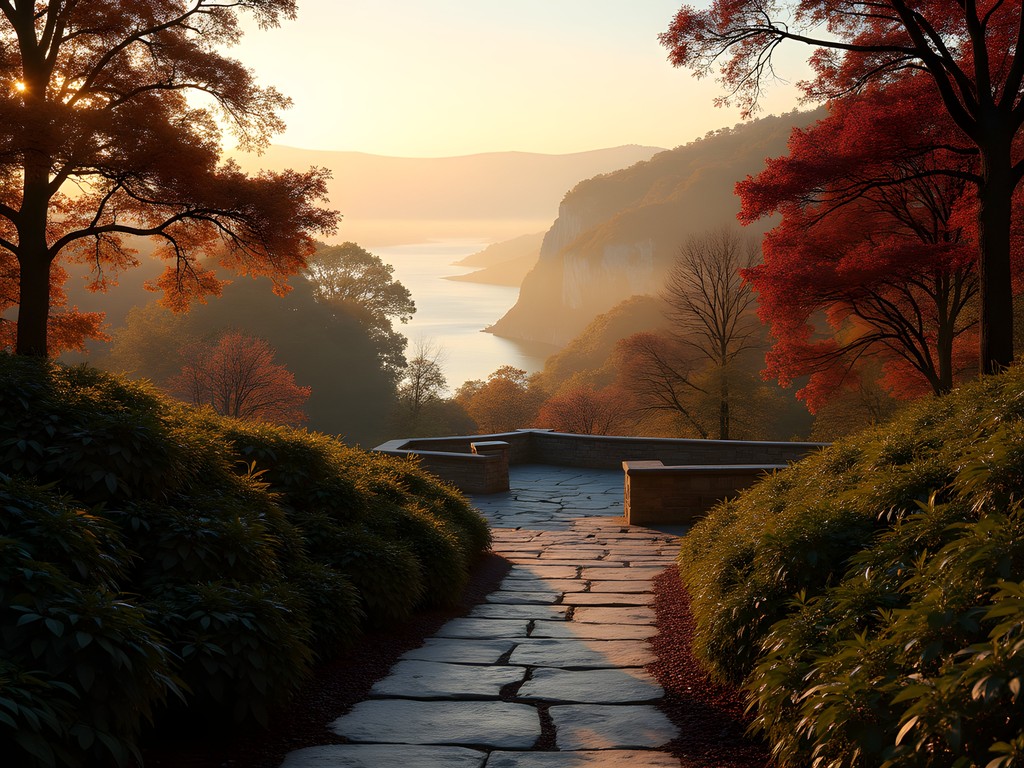
💡 Pro Tips
- Visit parks at opening time (usually 6am) for the best light and minimal crowds
- Include human elements selectively to establish scale in landscape compositions
- Look for seasonal maintenance schedules online to avoid photographing during pruning or renovation periods
Nocturnal New York: After-Hours Photography Opportunities
My specialization in night photography finds no better canvas than New York City after dark, when artificial lighting transforms ordinary scenes into theatrical tableaux.
Chinatown after dusk presents a photographic feast of neon signs, paper lanterns, and steamy restaurant windows that create a cinematic atmosphere. Pell Street and Doyers Street offer particularly rich visual environments with their narrow dimensions and dense signage. The reflective quality of rain-slicked streets after an evening shower multiplies the visual interest exponentially - I often hope for light precipitation during autumn visits specifically for this effect.
The Oculus transportation hub designed by Santiago Calatrava provides an otherworldly architectural space that photographs brilliantly at night. The ribbed white structure illuminated from within creates a science fiction aesthetic unlike anything else in the city. Visit after 9pm when commuter crowds thin but before the midnight closing to capture the soaring interior space with minimal human presence.
Grand Central Terminal transforms after the commuter rush subsides around 9pm. The magnificent constellation ceiling and streaming light rays through the grand windows create a cathedral-like atmosphere that rewards patient photographers. Setting up a discrete tripod becomes possible during these quieter hours (though security may still approach - always be respectful and prepared to explain your artistic intentions). The north balcony offers the classic overview of the main concourse, but I've found more interesting compositions from ground level looking up at the monumental windows and celestial ceiling.
For serious night photography enthusiasts, I recommend the remote shutter release that has saved countless images from camera shake during my long-exposure work. When tripods aren't permitted, finding stable surfaces and triggering the camera remotely becomes essential for sharp results in low-light conditions.
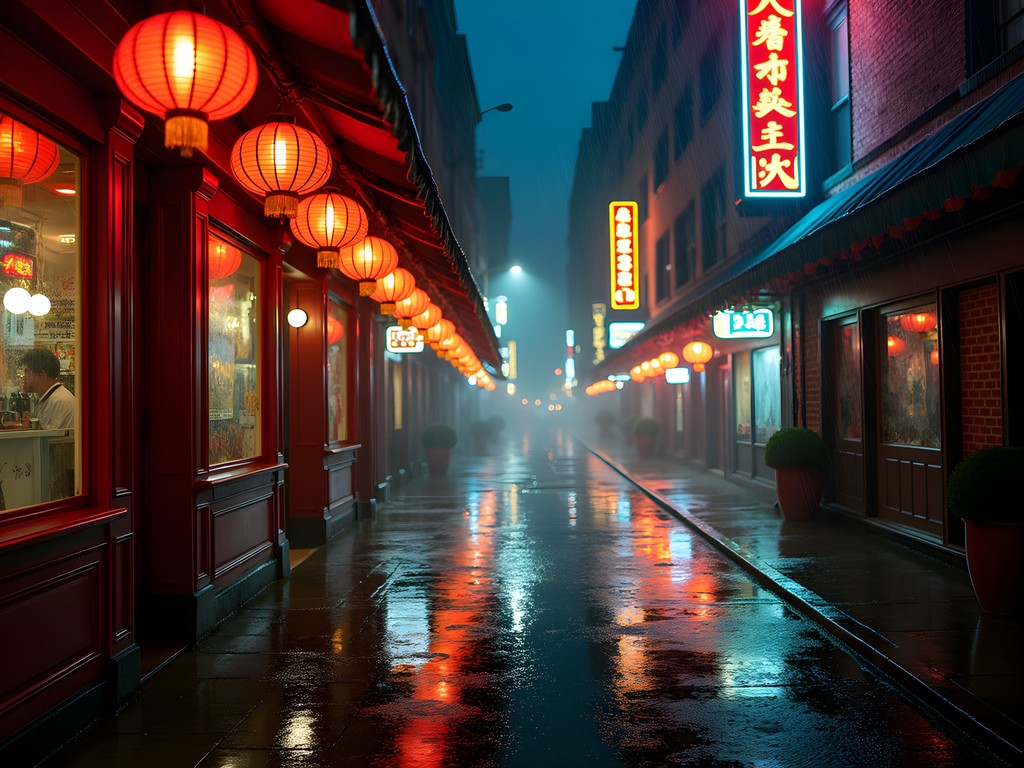
💡 Pro Tips
- Set your white balance manually rather than using auto settings to preserve the distinctive color temperatures of various urban lighting
- Embrace high ISO capabilities of modern cameras rather than always requiring a tripod - grain can enhance the atmospheric quality of night images
- Carry a small flashlight to illuminate camera settings in dark environments without using your phone's bright screen
Seasonal Spectacles: Autumn's Unique Photographic Offerings
Autumn in New York presents distinctive photographic opportunities that transform familiar locations with seasonal character and events.
The Mall in Central Park creates a cathedral-like corridor when its stately American elms turn golden in late October. While this location sees heavy visitor traffic, arriving at dawn reveals it in pristine condition with leaves carpeting the pathways. Position yourself at the northern end looking south for a composition that emphasizes the symmetrical tree canopy creating a natural archway. The low autumn sun angle creates dramatic dappled light patterns that add dimension to images.
The Halloween Parade in Greenwich Village offers extraordinary street photography opportunities with elaborate costumes against historic architecture. Rather than photographing the parade itself (which countless others do), I prefer positioning myself along side streets where participants gather before and after the event. These quieter moments often yield more authentic portraits and unexpected juxtapositions of the fantastic against the mundane.
Bow Bridge in Central Park becomes particularly photogenic in autumn when surrounded by fall foliage reflected in the lake. The classic view from the western shore captures the bridge with Midtown skyscrapers visible beyond the trees. Morning fog, common in autumn, adds atmospheric depth to these compositions. This location rewards photographers who visit multiple times throughout the season as different tree species change color sequentially, creating evolving compositions.
For those combining autumn foliage with architectural elements, the polarizing filter has proven invaluable in my kit. It not only enhances the saturation of fall colors but also manages reflections when incorporating water features or glass building facades into compositions with colorful trees.
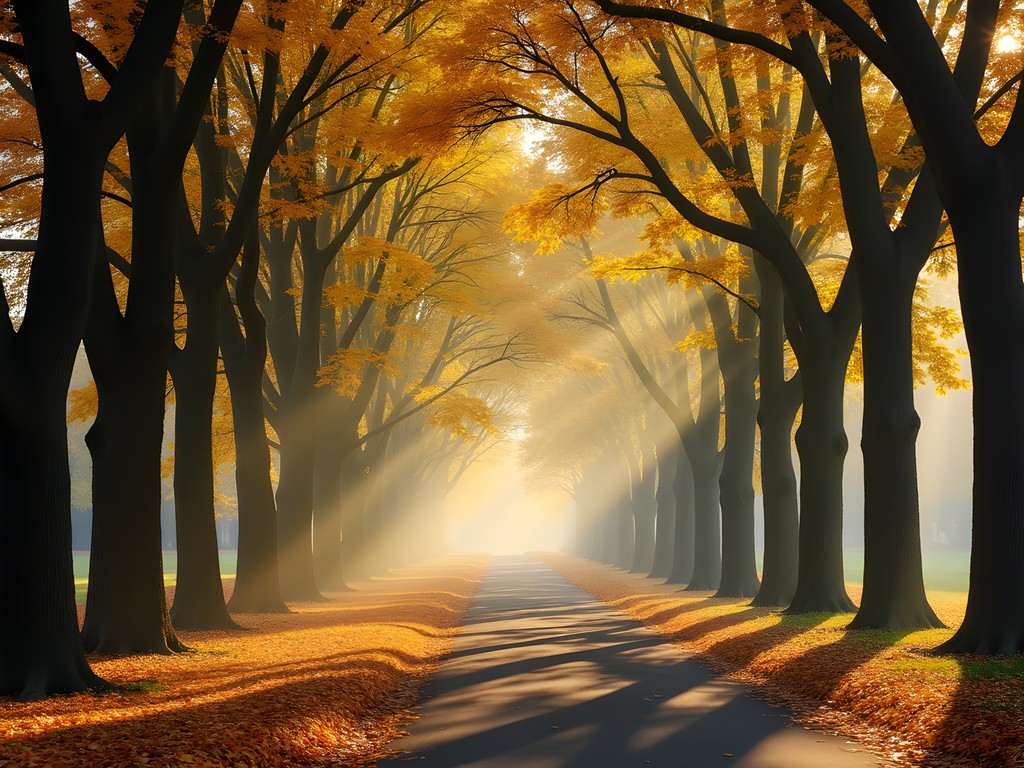
💡 Pro Tips
- Track fall foliage progression through NYC Parks Department updates online before your visit
- Photograph fall foliage on overcast days for richest color saturation without harsh shadows
- Include people selectively in autumn scenes to provide scale and narrative context
Final Thoughts
After fifteen years of combining dental conferences with photographic exploration, I've come to understand that New York reveals itself most authentically through a viewfinder pointed away from the obvious. The city rewards those who rise before dawn, venture beyond Manhattan, or linger after the commuter crowds disperse. My dental colleagues often ask why I extend my conference stays by several days each autumn. The answer lies in these fifteen locations where I've captured not just images but moments of connection with the city's complex character. Whether you're visiting for business as I initially did or purely for creative pursuits, I encourage you to set aside the tourist map and follow your lens to these less-celebrated corners. New York doesn't merely tolerate photographers - it performs for them, changing its appearance hourly with shifting light and seasons. All you need is the patience to observe and the willingness to explore beyond the expected frame.
✨ Key Takeaways
- Early morning photography (6-8am) offers the best combination of light quality and minimal crowds in popular locations
- Elevated perspectives beyond tourist observation decks provide unique compositional opportunities
- Water features throughout NYC create reflective surfaces that dramatically enhance urban photography
- Autumn transforms familiar locations with seasonal color and atmospheric conditions worth specifically targeting
📋 Practical Information
Best Time to Visit
Mid-October to early November for peak fall foliage
Budget Estimate
$150-250 per day including accommodation, transportation and observation deck admissions
Recommended Duration
3-4 days minimum to cover these photography locations properly
Difficulty Level
Moderate (Involves Early Mornings, Some Walking Between Locations, And Basic Photography Skills)
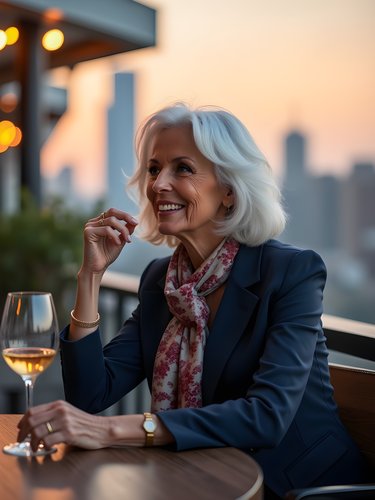
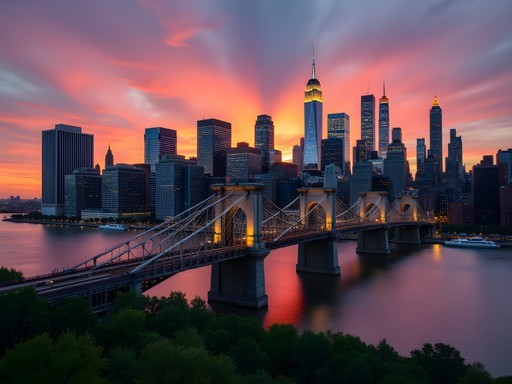
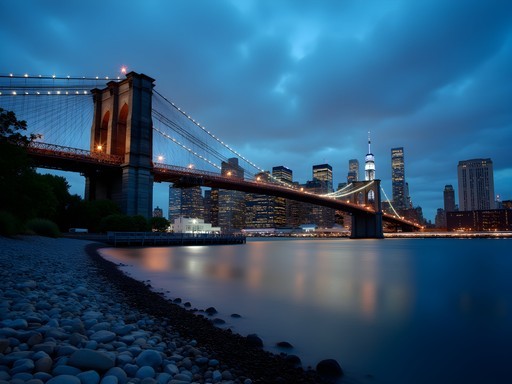
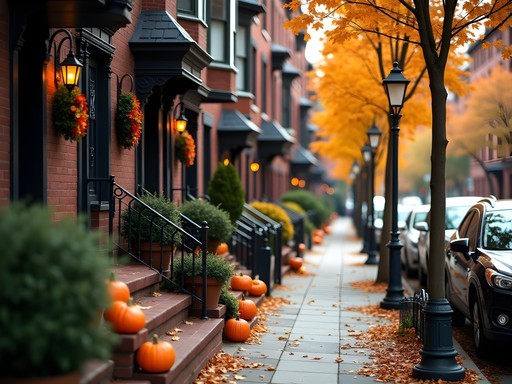
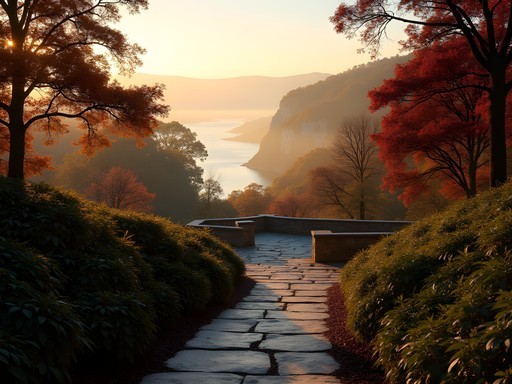

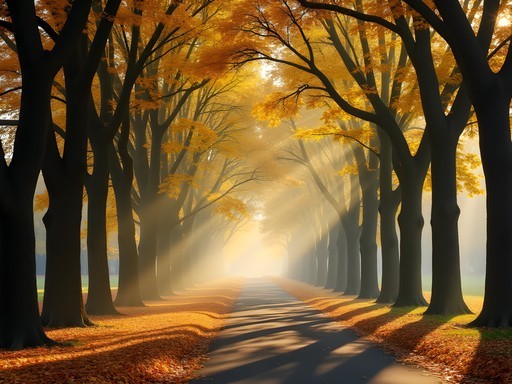


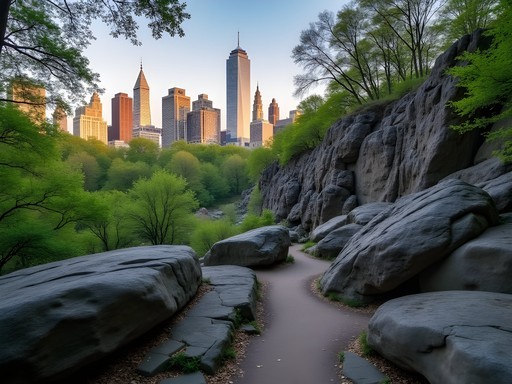
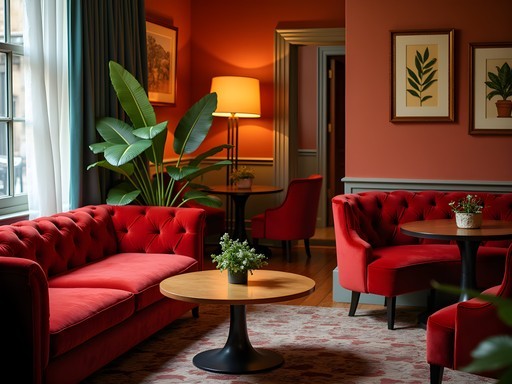
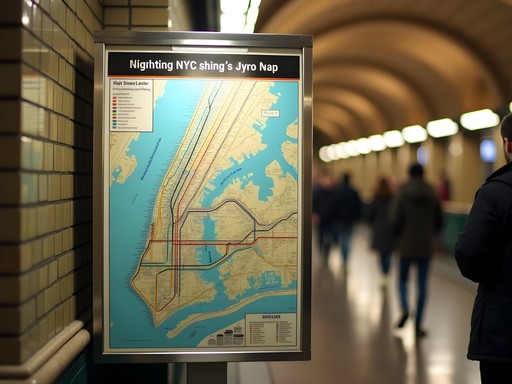
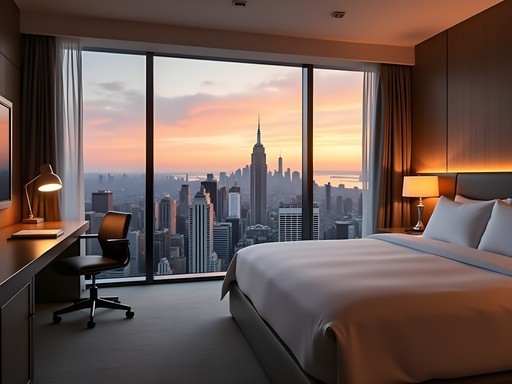


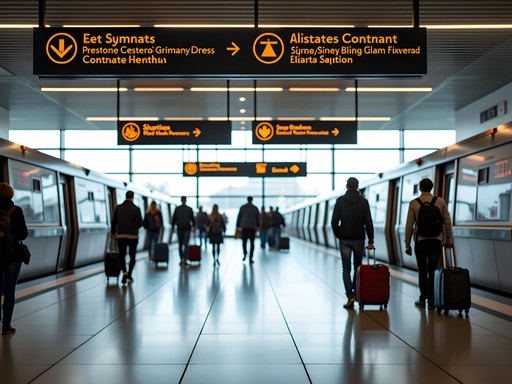
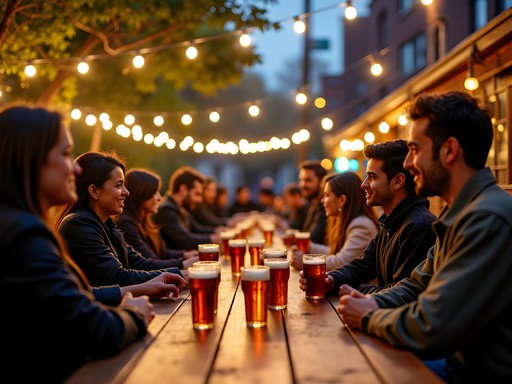
Comments
starvibes
Saved! Finally planning my NYC trip after years of dreaming about it!
nomadfan
Just got back from NYC and used this guide - the Roosevelt Island Tramway view was INCREDIBLE and not a single tourist in sight! Pro tip: go on a weekday around 4pm to catch both daytime and dusk lighting as the city transitions. Also found an amazing spot not mentioned here - the elevated walkway at Hudson Yards gives a unique perspective of the Vessel structure and High Line.
Stephanie Romano
Katherine, you've captured the essence of what makes NYC a photographer's playground! Last summer, I took my kids (10 and 12) on a 'photo scavenger hunt' through the city using spots similar to these. The Tudor City Overpass view of 42nd Street was their absolute favorite - they felt like they discovered a secret movie set! For families reading this, I found that framing these spots as 'missions' kept the kids engaged for hours. We even printed a little booklet of our shots afterward. The 'Urban Oases' section was perfect for midday breaks when the kids needed to run around. The Conservatory Garden in Central Park was practically empty compared to the zoo area!
nomadfan
Love the scavenger hunt idea! Definitely stealing that for our family trip.
Stephanie Romano
It works wonders! We made simple clues for each location and let them figure out the best angle for the shot. Keeps them engaged and looking UP at the city instead of down at devices!
summernomad
Love these suggestions! I'm heading to NYC in September. Which of these spots would be best early morning vs. evening for lighting?
starvibes
Not the author but I've shot at most of these! Brooklyn Bridge Park is MAGICAL at sunrise. Way fewer people too.
summernomad
Thanks for the tip! Early morning it is then!
Timothy Jenkins
Katherine, this is exactly the kind of guide I wish I'd had before my last NYC trip! I spent three days hunting for unique perspectives and completely missed that spot in DUMBO with the Manhattan Bridge framing. Your section on 'Architectural Time Capsules' is particularly brilliant - I'd add the hidden courtyard at the Ford Foundation Building to your list. The indoor garden creates fascinating light patterns that photographers dream about. I used my wide angle lens there and the results were spectacular for capturing both the architecture and greenery in one frame.
starseeker
Finally! A NYC guide that doesn't just rehash the same old spots everyone knows. That rooftop shot from Brooklyn is absolutely stunning! Saving this for my trip next month.
Katherine Fisher
Thanks starseeker! The Brooklyn Heights Promenade at sunset is magical - definitely worth timing your visit for golden hour!
starseeker
Will definitely plan for that! Any particular day of the week that's less crowded?
Katherine Fisher
Tuesday or Wednesday evenings tend to be quieter. Weekends get packed, especially with good weather!
starrider
That shot of the Oculus with the morning light streaming through is absolutely stunning! What time of day did you take that? The contrast is perfect.
Katherine Fisher
Thank you starrider! That was around 8:30am on a Sunday in early autumn. The Oculus is surprisingly empty at that hour, and the light angles are just perfect. Weekdays are much trickier with the commuter crowds.
exploreguide
Going to NYC for the first time next week! Your urban oases section is giving me life - need some green spaces between all the concrete!
starrider
Don't miss The Elevated Acre! It's in the financial district and hardly anyone knows about it. Great views and never crowded!
exploreguide
Thanks for the tip! Adding it to my list right now!
Taylor Moreau
Katherine, what a refreshing take on NYC photography! As someone who frequently visits for business, I've developed a similar habit of seeking out these hidden compositions. Your section on 'Architectural Time Capsules' resonated particularly well. Last quarter, I had a few hours between meetings and discovered the courtyard at the Morgan Library - absolutely stunning light patterns around 3pm. I'd add Tudor City Overpass to your list of elevated perspectives - it frames the UN Building and East River beautifully, especially during the golden hour. I've found using my compact tripod essential for those low-light courtyard shots. Looking forward to trying some of your waterfront recommendations on my December trip!
starrider
Tudor City Overpass is such a hidden gem! Got some of my best Manhattan shots there last year.
Taylor Moreau
Isn't it wonderful, starrider? I stumbled upon it completely by accident during an evening walk. Sometimes the unplanned discoveries make for the best photographs.
tripexplorer
Katherine, loved your perspective on NYC beyond the usual tourist spots! I've been to New York several times but never thought to check out those waterfront spots you mentioned. Which one would you say has the best skyline view for sunrise shots?
Katherine Fisher
Thanks tripexplorer! For sunrise, I'd definitely recommend Brooklyn Bridge Park. The morning light hitting the Manhattan skyline across the East River is absolutely magical. Get there about 30 minutes before sunrise to set up - the gradual illumination of the buildings is worth capturing in sequence!
tripexplorer
Perfect! Adding this to my itinerary for next month's trip. Appreciate the timing tip too!
Venture X
Premium card with 2X miles, $300 travel credit, Priority Pass